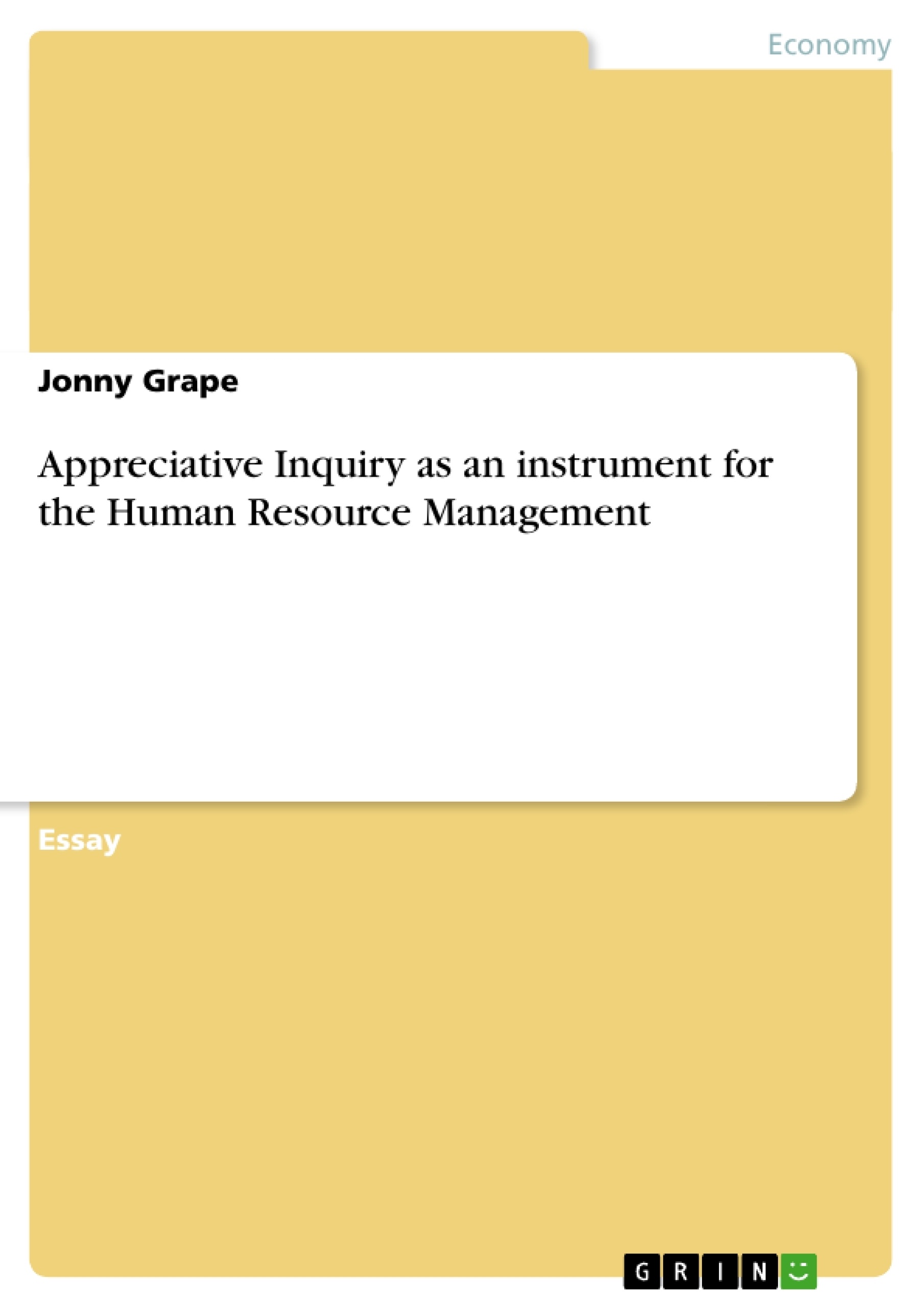Appreciative Inquiry, kurz AI, wurde von David Cooperider u.a. Mitte der achtziger Jahre des vorherigen Jahrhunderts an der Case Western Reserve University, USA, entwickelt. Es handelt sich hierbei um eine Methode, die dort angewandt werden kann, wo Fähigkeiten, Ressourcen, Verhaltensweisen eines Teams, einer Organisation bzw. komplexen Systems fortentwickelt, verändert oder neu gestaltet werden soll.
Die Grundidee von AI ist einfach: Menschen und Systeme bewegen sich in die Richtung, in welche die Aufmerksamkeit gerichtet ist. Folglich gibt es nur zwei Möglichkeiten: Entweder die Schwächen betonen oder die Stärken konsequent hervorheben. AI konzentriert sich auf die Stärken, das Positive, das Potenzial eines Unternehmens, eines Systems bzw. eines Teams. Damit steht AI im Gegensatz zu traditionellen Ansätzen der Organisationsberatung: Mittels der konsequenten Konzentration auf vorhandene Stärken sollen Änderungen herbeigeführt und Ziele realisiert werden.
Dieses Buch liefert eine detailierte Einführung in den Ansatz und den Prozess von AI. Besonderes Augenmerk wird hierbei auf die vier Phasen von AI sowie deren Möglichkeiten und Grenzen gelegt. Damit ist dieses Buch für Wissenschaft und dem praktischen Einsatz gleichermaßen relevant.
Um den Ansatz von AI in seiner Originalität und Ganzheitlichkeit darstellen zu können, hat sich der Autor entschieden, diese Arbeit konsequent in englischer Sprache zu verfassen. Schließlich werden hiermit mögliche Fehlinterpretationen und Missdeutungen vorgebeugt, die in der deutschen Sprache entstehen könnten.
Diese Arbeit ist im Zusammenhang mit der Analyse entstanden, wie die Human Resources zu dem wertvollsten einer Unternehmung, eines Team bzw. Organisation entwickelt werden können. Die Antwort auf diese Frage ist nach Auffassung des Verfassers die Basis für Erfolg im Wettbewerb, im Veränderungsprozess sowie in komplexen und schwierigen Situationen. Hier bildet AI eine neue Möglichkeit, Teams und Unternehmen wieder zu Spitzenleistungen zu bringen.
Zum Verfasser:
Jonny Grape studierte Betriebswirtschaftslehre an der ehem. Hamburger Universität für Wirtschaft und Politik und absolvierte zusätzlich einen MBA-Studiengang. Durch seine mehrjährige Erfahrung u.a. als Berater für Change Management sowie als Schnittstelle zwischen Vertrieb und Personal bei einem internationalen Personaldienstleister beschäftigt er sich mit interdisziplinären Fragestellungen des Personalbereiches in Theorie und Praxis.
Inhaltsverzeichnis (Table of Contents)
- Introduction
- 1. The Appreciative Inquiry Basic Model
- 1.1. Definition And History Of Appreciative Inquiry
- 1.2. AI-Assumptions
- 1.3. AI-Purposes
- 1.4. The 4-D Process
- 1.4.1. The Discovery-Step
- 1.4.2. The Dream-Step
- 1.4.3. The Design-Step
- 1.4.4. The Delivery-Step
- 1.5. Fields Of AI
- 2. Influencing Factors For AI
- 2.1. The National/Regional Cultural Context
- 2.2. The Organizational-Field Context
- 2.3. The Organizational-Culture
- 2.3.1. The Values
- 2.3.2. The Beliefs
- 2.3.3. The Paradigm
- 2.4. The Functional-Cultural Context
- 3. The Use Of AI As An Instrument In The Human Resource Management
- 3.1. Meaning And Benefits Of Discovery And Dream-Steps
- 3.1.1. Meaning And Benefits Of Discovery-Step
- 3.1.2. Meaning And Benefits Of Dream-Step
- 3.2. Creating The Discovery- And Dream Steps
- 3.2.1. The Creating Of The Discovery-Step
- 3.2.2. The Creating Of The Dream-Step
- 3.3. Boundaries From AI As An Instrument For The HRM
- 3.1. Meaning And Benefits Of Discovery And Dream-Steps
- Conclusion
Zielsetzung und Themenschwerpunkte (Objectives and Key Themes)
This essay examines the method "Appreciative Inquiry" (AI) as an instrument in Human Resource Management (HRM). It explores the basic model developed by David L. Cooperider and Sirvah Sirvasta, contrasting it with traditional approaches that focus on weaknesses. The essay aims to provide a theoretical understanding of AI, its influencing factors, and its application within organizations, facilitating individual adoption in diverse contexts.
- The theoretical framework of Appreciative Inquiry (AI)
- The influencing factors on AI implementation in organizations
- The application of AI as a tool for Human Resource Management (HRM)
- The benefits and challenges of using AI in different organizational contexts
- The importance of understanding the organizational culture and paradigm for successful AI implementation
Zusammenfassung der Kapitel (Chapter Summaries)
Chapter 1 provides a comprehensive overview of the Appreciative Inquiry (AI) basic model, tracing its history and highlighting its core assumptions and purposes. It delves into the 4-D process, particularly the discovery and dream steps, which are central to the essay's focus. This chapter concludes with a presentation of the diverse fields of AI application.
Chapter 2 examines the multifaceted influencing factors that affect AI implementation. It analyzes the national/regional cultural context, the organizational-field context, and the organizational culture, including its values, beliefs, and paradigm. This chapter aims to provide a comprehensive understanding of the complex framework surrounding AI within organizations.
Chapter 3 explores the practical application of AI within Human Resource Management (HRM), focusing on the meaning and potential benefits of the discovery and dream steps. It examines the necessary steps for preparing and implementing these phases, culminating in an analysis of the boundaries and limitations of AI as a tool for HRM.
Schlüsselwörter (Keywords)
Appreciative Inquiry, AI, Human Resource Management, HRM, organizational culture, paradigm, discovery step, dream step, influencing factors, benefits, boundaries, theoretical framework, practical application.
- Citar trabajo
- Diplom-Betriebswirt, MBA Jonny Grape (Autor), 2003, Appreciative Inquiry as an instrument for the Human Resource Management, Múnich, GRIN Verlag, https://www.grin.com/document/13223




